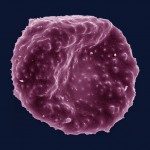Lien vers Pubmed [PMID] – 29334956
Malar. J. 2018 Jan;17(1):27
BACKGROUND: Malaria elimination needs a concentration of activities towards identification of residual transmission foci and intensification of efforts to eliminate the last few infections, located in so-called ‘malaria hotspots’. Previous work on characterizing malaria transmission hotspots has mainly focused on falciparum malaria and especially on symptomatic cases, while the malaria reservoir is expected to be mainly concentrated in the asymptomatic human population when transmission is low. For Plasmodium vivax, there has been less effort in identifying transmission hotspots. The main aim of this study was to uncover micro-epidemiological mechanisms of clustering of malaria infections at a sub-village level, based on geographical or behavioural features.
METHODS: A cross-sectional survey was performed in three villages within the highest malaria endemic province of Cambodia. The survey took place in the dry season, when the malaria reservoir is expected to be low and residing in the asymptomatic part of the population. Village and field locations of households were georeferenced, blood samples were taken from as many residents as possible and a short questionnaire probing for individual risk factors was taken. Asymptomatic malaria carriers were detected by PCR, and geographical clustering analysis (SaTScan) as well as risk factor analysis were performed.
RESULTS: A total of 1540 out of 1792 (86%) individuals were sampled. Plasmodial DNA was detected in 129 individuals (8.4%). P. vivax was most prevalent (5.5%) followed by Plasmodium malariae (2.1%) and Plasmodium falciparum (1.6%). Mixed infection occurred in 12 individuals. In two out of three villages geographical clustering of high and low malaria infection risk was clearly present. Cluster location and risk factors associated with the infection differed between the parasite species. Age was an important risk factor for the combined Plasmodium infections, while watching television at evenings was associated with increased odds of P. vivax infections [OR (CI): 1.86 (0.95-3.64)] and bed net use was associated with reduced odds of P. falciparum infections [OR (CI): 0.25 (0.077-0.80)].
CONCLUSIONS: Clusters of malaria carriers were malaria species specific and often located remotely, outside village centres. As such, at micro-epidemiological level, malaria is not a single disease. Further unravelling the micro-epidemiology of malaria can enable programme managers to define the interventions likely to contribute to halt transmission in a particular hotspot location.


